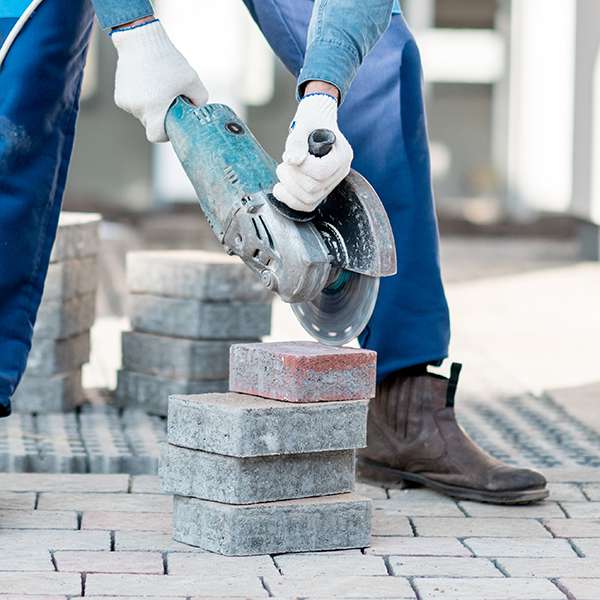Silica Dust Monitoring
Silica is one of the most abundant minerals found in the earth’s crust and is used in many products across a variety of industries and workplaces. Respirable Crystalline Silica (RCS) is most dangerous to health when generated dusts become airborne and are inhaled.
Our Respirable Crystalline Silica dust monitoring service delivers peace of mind to employers with Australia’s leading Silica Dust Risk Assessment. RCS monitoring can assist with the anticipation, identification and analysis of RCS hazards allowing for the implementation of silica air testing and further assessment of suitable controls.
Respirable Crystalline Silica Dust Monitoring & Testing
Dependable Respirable Crystalline Silica Monitoring
Silicosis is a type of lung disease caused by inhaling respirable crystalline silica. It is one of the oldest industrial diseases described yet remains one of the most common dust related diseases.
The resurgence of silicosis cases, particularly more accelerated forms of the disease, has gained significant attention from regulatory bodies aiming to prevent crystalline silica exposure.
There exists a number of national and state based standards and Code of Practice. Your business will benefit from our experienced team of consultants who are are experts in silica dust control measures and the requirements of the legislation applicable to your business for any silica exposure assessment.
Our Respirable Crystalline Silica Monitoring Includes:
- Rigorously trained consultants holding the requisite competencies to undertake your silica dust monitoring
- Consultants with a thorough understanding of the relevant Australian and industry specific standards for silica dust exposure testing by which monitoring of silica dust hazards must be conducted
- We only use fit for purpose equipment, appropriately calibrated, which complies with the requirements of respective respirable crystalline silica legislation for silica exposure testing
- A commitment to you, our client, to provide the highest levels of crystalline silica monitoring service possible
Respirable Crystalline Silica
Crystalline silica (silica) is found in sand, stone, concrete and mortar. It can be used to make a variety of products including engineered stone benchtops, pre-formed cement products, glass, bricks and tiles. Respirable crystalline silica testing is vital for any industries that are cutting these materials.
When products containing crystalline silica are cut, crushed, drilled, polished or ground, dust particles containing crystalline silica can become airborne. If the particles are small enough they can be lodged deep in the lungs and cause disease. For this reason silica dust air monitoring is required to ensure your business protects it’s employees and fulfills the regulatory obligations.
Construction and Manufacturing of Construction Elements
A new Queensland Code of Practice for Managing respirable crystalline silica in construction and manufacturing of construction elements is expected shortly.
The Code of Practice will apply to those industries in Queensland that undertake a broad range of construction and manufacturing activities which generate, or make airborne, respirable crystalline silica.

Stone Benchtop Industry
The Queensland Code of Practice – Managing respirable crystalline silica dust exposure in the stone benchtop industry provides practical guidance on how to manage risks associated with respirable crystalline silica and dust exposure.
It includes activities such as fabrication, processing, installing, maintaining and removing engineered and natural stone benchtops.
What is respirable crystalline silica?
Respirable dust (particles typically <10 µm) are invisible under normal light and can stay airborne long after visible dust particles have settled. The extremely small particles can penetrate deep into areas of the lungs responsible for gas exchange causing a range of diseases.
RCS is particularly harmful when inhaled. This is due to the nature of its crystalline structure which can cause inflammation and scarring of lung tissues. Lung diseases associated with RCS include silicosis, progressive massive fibrosis, COPD and lung cancer.
Many Australian workers are exposed to Respirable Crystalline Silica dust on a daily basis and although not all will develop silicosis, a significant proportion will. The likelihood of developing silicosis and other lung diseases associated respirable crystalline silica is related to how much dust workers were exposed to and for how long, with symptoms appearing between months and many years after exposure.
Most importantly, these diseases are entirely preventable.
Why is respirable crystalline silica monitoring important?
Inhaling respirable crystalline silica can lead to long term lung disease like:
- silicosis – an incurable lung disease that can lead to disability and death
- progressive massive fibrosis
- chronic obstructive pulmonary disease (COPD)
- lung cancer
- scleroderma
- kidney damage
Let us improve your workers health with silica air monitoring while ensuring your business’ compliance with the required legislation & minimising the hazards of silica dust exposure.
Still have questions about silica dust monitoring?
Our team provides respirable crystalline silica dust monitoring services to Australia’s largest employers. No matter the questions that you have about silica exposure monitoring, we’re sure to be able to answer them.
Experience Breeds Confidence
Managing respirable crystalline silica dust exposure in construction and manufacturing of construction elements Code of Practice 2022
The Code of Practice for managing risks associated with exposure to Respirable Crystalline Silica (RCS) applies to businesses and individuals involved in construction work and manufacturing of construction materials. The code provides guidance on managing the risks associated with RCS and dust monitoring, which is a hazardous substance found in materials such as cement, concrete, and bricks that can become airborne during certain tasks.
The code applies to all workplaces covered by the WHS Act where construction work or manufacturing of construction elements takes place. Tasks that involve using materials that contain 1% or more crystalline silica content and generate RCS or make RCS airborne are covered. However, it does not cover the manufacturing of tools or plant for use in construction or the engineered and natural stone benchtop industry.
Business owners have a responsibility to ensure that no one is exposed to RCS above the workplace exposure standard. Materials containing 1% or more crystalline silica cannot be processed without controls in place to prevent RCS from getting into the air. Power tools that cut, crush, scabble, grind, saw, sand, or polish such materials must be avoided without water suppression. Additionally, free silica containing more than 1% crystalline silica is prohibited for abrasive blasting processes. Business owners should refer to the Abrasive blasting Code of Practice for further guidance on restrictions and controls.
It is important to note that uncontrolled dry cutting or processing of materials containing 1% or more crystalline silica is prohibited, as it can expose workers to harmful levels of RCS. Similarly, materials with more than 1% crystalline silica should not be used in abrasive blasting.
To comply with the Code of Practice, businesses involved in construction or manufacturing of construction elements must follow the controls outlined in the controls table (Appendix 4) to manage the risk of RCS exposure. If they are not using the controls, they should refer to Section 2.1 for guidance on how to implement them. If they are unsure about how to manage the risk of RCS exposure, they should refer to Section 2.2 for guidance.
Overall, it is crucial to take steps to manage the risk of RCS exposure to protect the health and safety of workers in the workplace. If a business uses materials that contain 1% or more crystalline silica and creates dust that workers may be exposed to, they must follow the steps outlined in the Code of Practice. Section 5.1 provides guidance on how to determine if materials contain crystalline silica.
